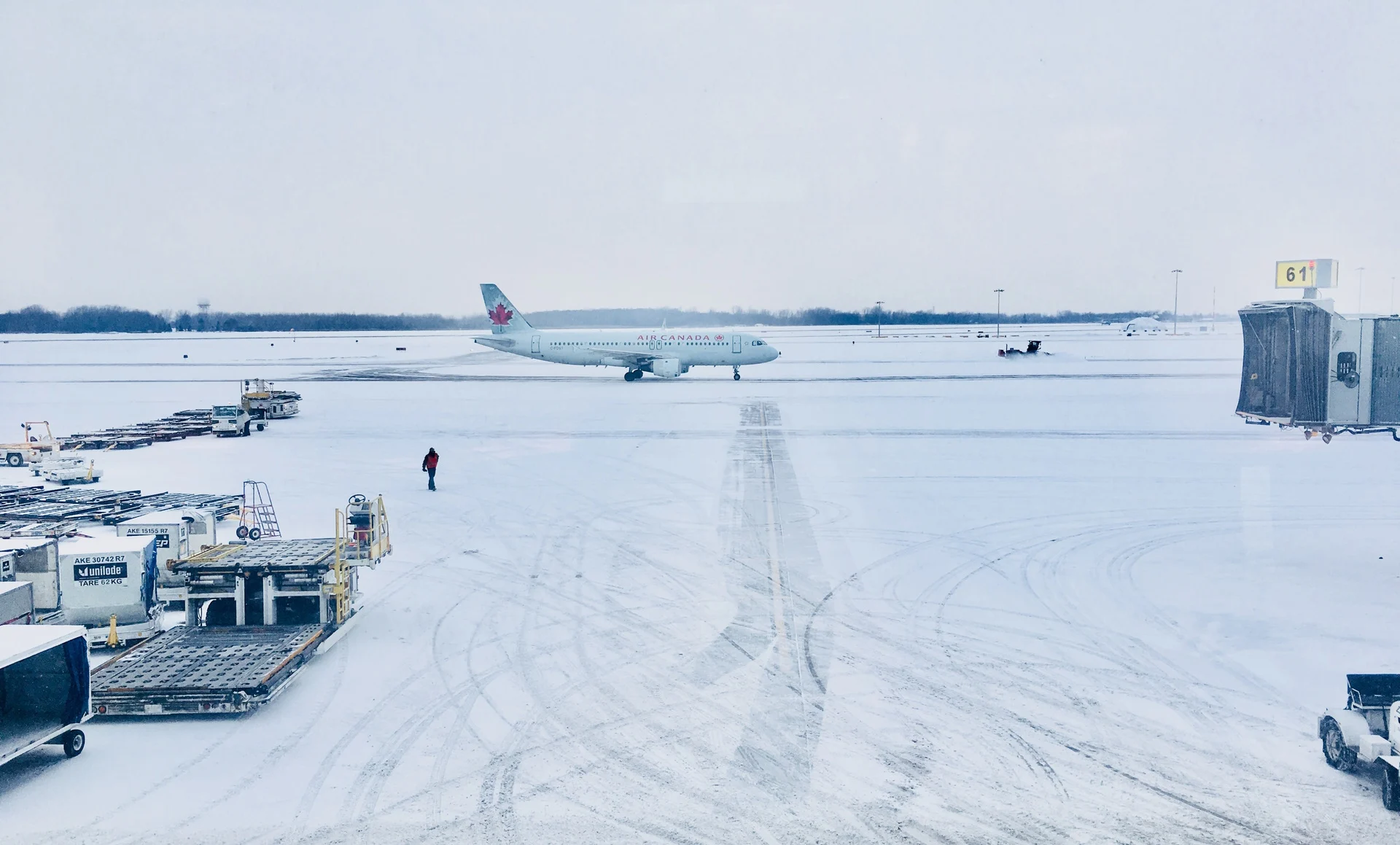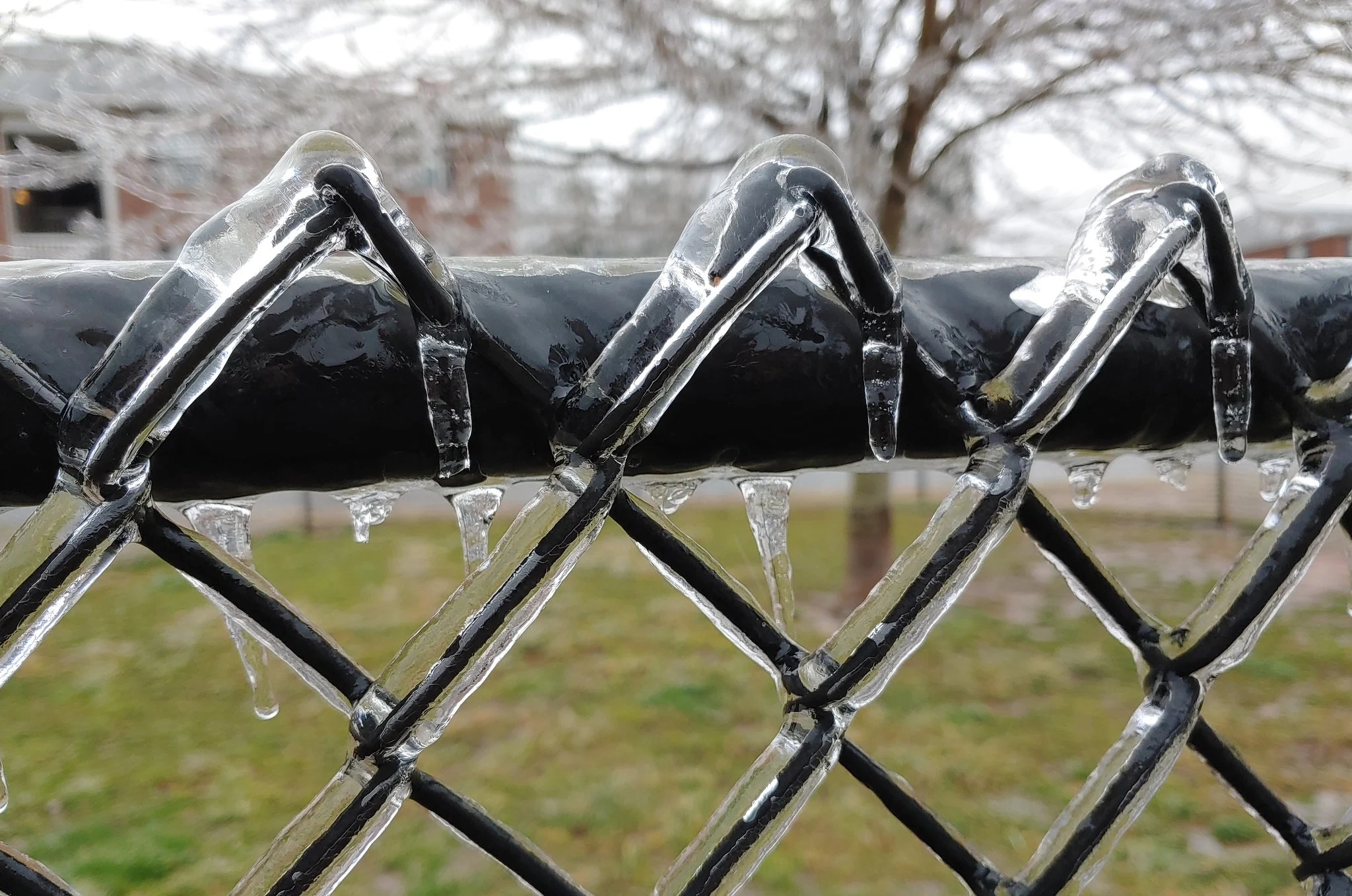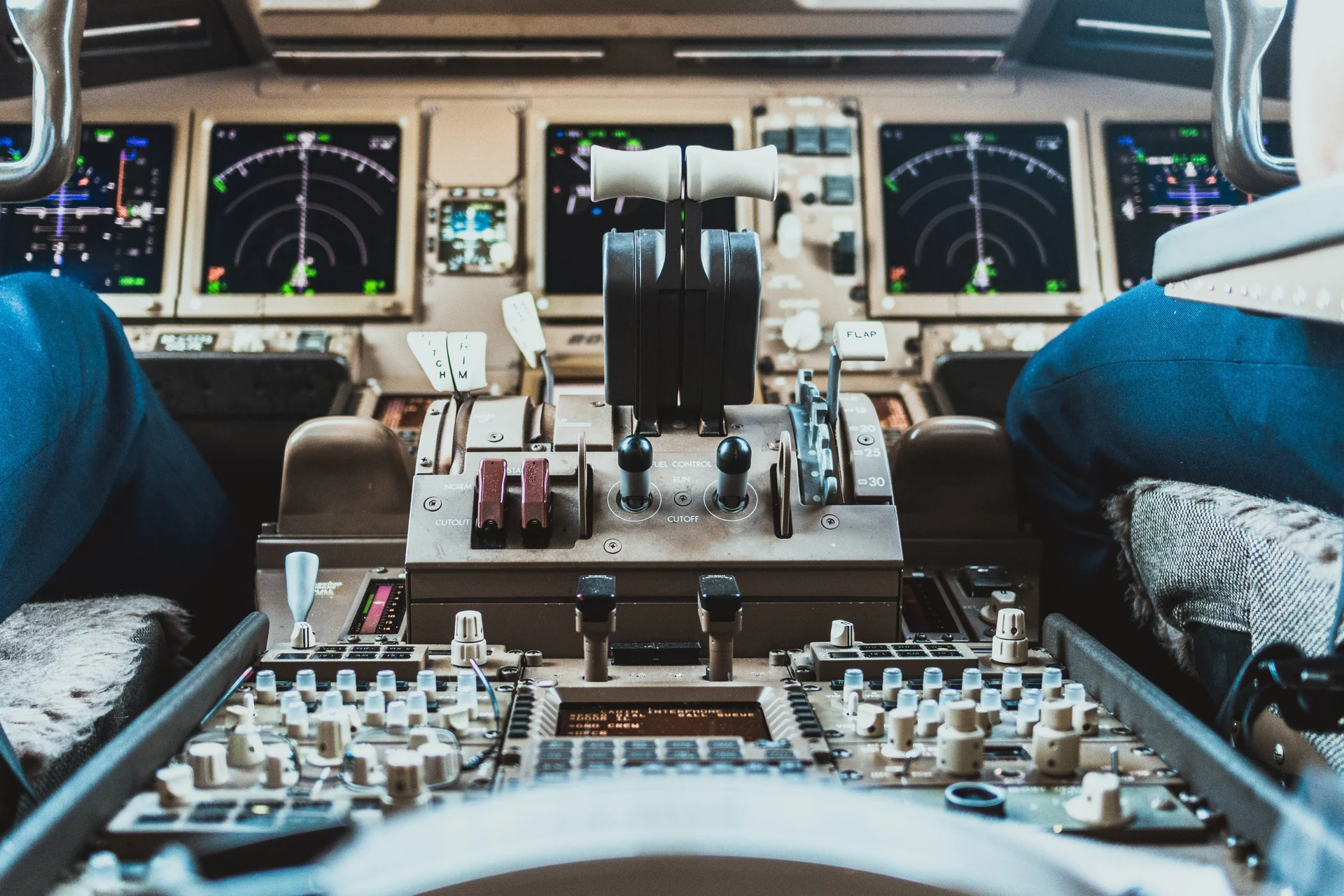
Six annoying ways weather forces airlines to cancel your flight
Flight delays and cancellations are an unavoidable part of travelling. Most of the time, these disruptions are better than taking a gamble in dangerous conditions.
A terminal full of television screens all blinking the words “DELAYED” and “CANCELLED” is a nightmare for even a seasoned traveller.
It may not seem like it in the heat of the moment, but airlines really don’t delay or cancel flights lightly. Every cold and dark airplane sitting on the tarmac represents money not going into the airlines’ coffers—not exactly any company’s goal.
Foul weather is the leading cause for flight disruptions here in Canada and around the world. Conditions that may not seem cumbersome to us on the ground could have devastating consequences for a flight caught in the wrong place at the wrong time.
Ice can be fatal
Ice is far and away one of the most dangerous weather-related aspects of flying.
An airplane’s ability to generate lift relies heavily on the smooth, sleek surface of the aircraft itself. Even a thin crust of ice on the fuselage, wings, or tail assembly can impede the airplane’s ability to generate lift.
PODCAST: Air Florida Flight 90 crashed in the snow due to a cascade of negligence
Without sufficient lift, the airplane can stall and quite literally fall out of the sky.
Modern aircraft are equipped with plenty of failsafes to protect passengers from the effects of icing. De-icing procedures on the ground and multiple heating elements on the flight surfaces themselves can bust up existing ice and help prevent any more from forming.

(Photo by Dennis Mersereau)
But chemicals and physical heat can only go so far. Freezing rain is often an impossible foe to defeat. Some snowstorms are so heavy that it’s too much of a task to keep the plane clean. Sometimes, conditions are right for significant icing in the skies above and around an airport.
Airports sometimes close completely due to ice, but more often than not, it’s the airlines that decide it’s simply too unsafe to fly.
DON'T MISS: How one of Canada's busiest airports navigates tough winter weather
Slick runways are dangerous
Highways and sidewalks can be treacherous after a burst of snow or a summertime thunderstorm, and we travel those surfaces at a relative crawl compared to the speeds of an airplane taking off or landing.
Slick runways are a hazard to aircraft whether it’s the heart of winter or the middle of summer. An airplane veering off a runway or taxiway is known as a “runway excursion”—a rather generous term compared to phrases like “slid into the grass.”
Runway excursions happen more often than you probably want to think about. Most of these incidents are minor and don’t result in any injuries. It’s not uncommon for a plane to slide off the taxiway on an icy night and get stuck in the grass, for instance. But every once in a while, a plane will lose traction on a wet or snow-covered runway and come to a hard and painful stop.
No airline wants to risk its passengers, its crew, or its equipment when runway conditions are dangerous. If crews determine conditions are too dangerous to safely proceed, they’ll delay or cancel the flight. It’s better to be safe than take an unnecessary risk.
Even with technology, visibility matters
Newer commercial planes are equipped with glass cockpits that have advanced computer screens for the pilots to watch as they navigate the skies.

(Franz Harvin Aceituna/Unsplash)
Gone are the days of relying solely on blue-and-brown attitude indicators to figure out which way is up. Today’s electronic flight displays offer detailed maps and even 3-D terrain models of the Earth around and beneath the aircraft.
Despite these advances, low visibility due to fog and heavy precipitation is still a leading cause of flight disruptions.
Modern aircraft are able to fly through remarkably low visibility. If you’ve ever flown on a foggy day, for example, you’ll know it’s possible (and somewhat startling!) to barely see the ground before the wheels touch the runway.
Even the newest technology can’t replace a pilot’s need to see out the windows. Arriving and departing aircraft typically require 400-800 m of visibility at minimum in order to operate safely. Anything lower than that is too unsafe for planes to operate on taxiways and runways.
Winds are dangerous
Nothing serves as a bigger reminder that our atmosphere is fluid in motion than flying on a windy day.
We hardly notice our flight getting pushed around by strong winds when we’re cruising along at altitude, but those buffeting gusts make themselves known when we’re going much slower on takeoff and landing.
Airports are built with the weather in mind. Designers take into account a location’s prevailing winds when laying out an airport’s runways. Planes typically take off and land into the wind, giving pilots better control over their speed and stability.
The weather doesn’t always cooperate, though.
Crosswinds are a common headache that pilots endure when winds blow perpendicular to the runway. Strong crosswinds are common when big storms or fronts sweep through a region.
WATCH: These sideways plane landings look intense, but they aren't what they seem
You’ve probably seen videos of pilots guiding their planes to the runway during strong crosswinds, gliding down to the runway frighteningly askew before straightening out at the last second in a seemingly effortless landing.
While your plane and well-trained pilots can endure a stiff wind, sometimes the winds are too strong to handle.
Each type of aircraft—as well as the airlines that operate them—have their own guidelines on the types of winds they can endure before it’s unsafe to fly.
Crosswinds greater than 50-60 km/h may cause airlines to delay or cancel flights. Even lower gusts can trigger flight delays or cancellations if the runways are wet or icy, as stiff winds can reduce a plane’s ability to brake on the runway.
The hub-and-spoke model has its drawbacks
You’ve likely encountered a flight that got nixed by bad weather even though it was hundreds or thousands of kilometres away from the storm.
One of the drawbacks of modern airline operations is that bad weather affecting one major city can have ripple effects that can affect all of its flights for days at a time.
Almost all major airlines in North America operate on the hub-and-spoke model, ferrying passengers to giant airport hubs rather than taking them directly from their hometown to their destination.

A map of select Air Canada routes from Montreal-Trudeau International Airport, demonstrating the hub-and-spoke model that most airlines use today. (Map by Dennis Mersereau, satellite background via NASA)
Airlines prefer the hub-and-spoke model because it cuts costs and allows passengers to easily connect to a wide range of destinations. This type of operation also makes efficient use of small fleets. One airplane can fly to a bunch of different cities in the same day.
The hub-and-spoke’s greatest advantage is also its greatest flaw. Bad weather at one of the major hubs—Toronto-Pearson Airport, for instance—can affect every flight that routes through that hub on its schedule.
If one airplane flies from Toronto to Montreal and back in the morning, then to Edmonton in the afternoon, any bad weather in Toronto or Montreal will affect the folks waiting for that plane 3,500 km away in Edmonton.
WATCH: Made in Canada: Get to know the first ever autonomous airport snowplow
Flight crews can encounter issues and restrictions on the ground
There’s also the simple barrier of logistics. After all, a plane can’t leave if there’s nobody to fly it, load it, fuel it, or board it. Bad weather sometimes keeps airline employees from making it to the airport at all. It’s our vacation, but it’s their daily commute to work.
Long weather-related delays can sometimes cause flight crews to “time out,” so to speak, running up against regulations that require certain hours of rest. If a crew waiting on standby waits too long, they’ll hit a set limit and can no longer legally fly until they’ve had a certain period of rest. These regulations exist to help crews prevent fatigue that could lead to mistakes.
Big storms can also cause infrastructure issues at and around the airport. Power outages and communications issues can force an airport to pause operations, which then forces airlines to postpone their flights. These large-scale delays can trickle down and cause headaches for days in some instances.
Thumbnail image courtesy of Unsplash.











